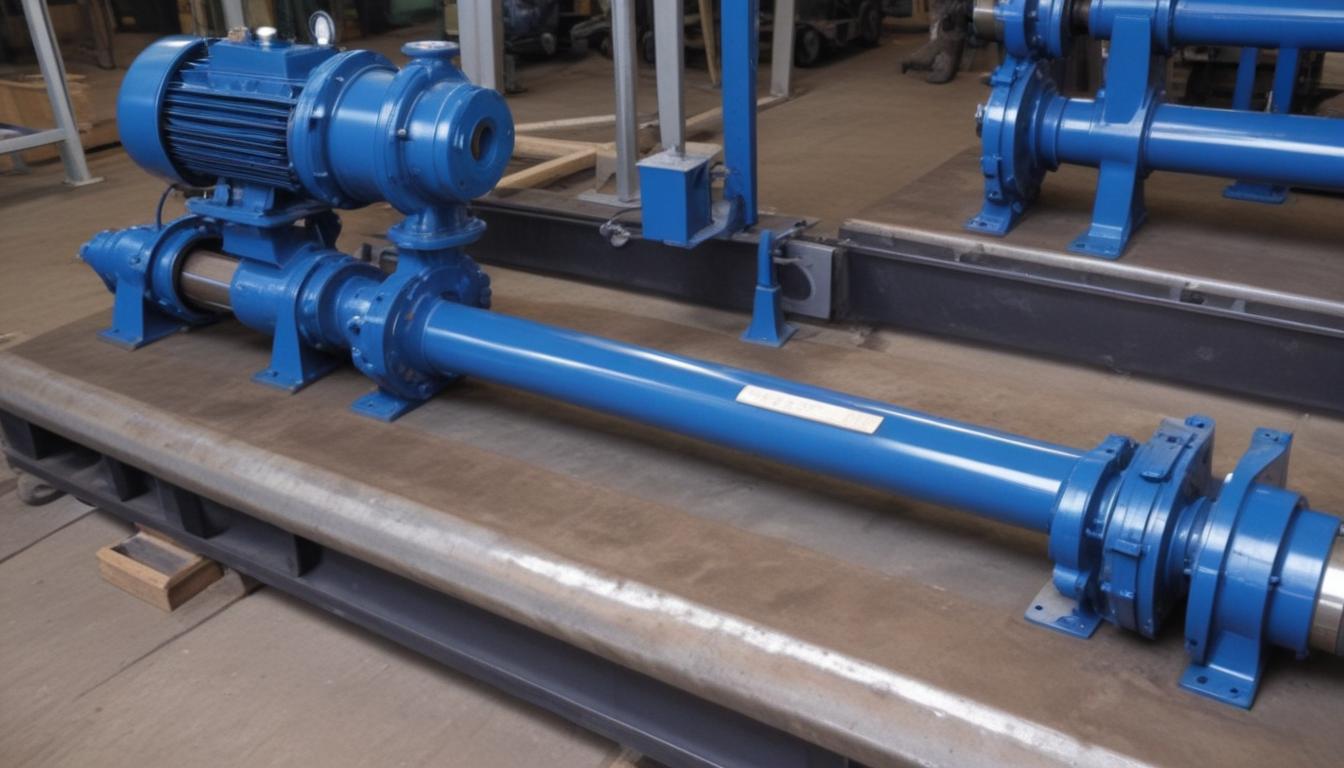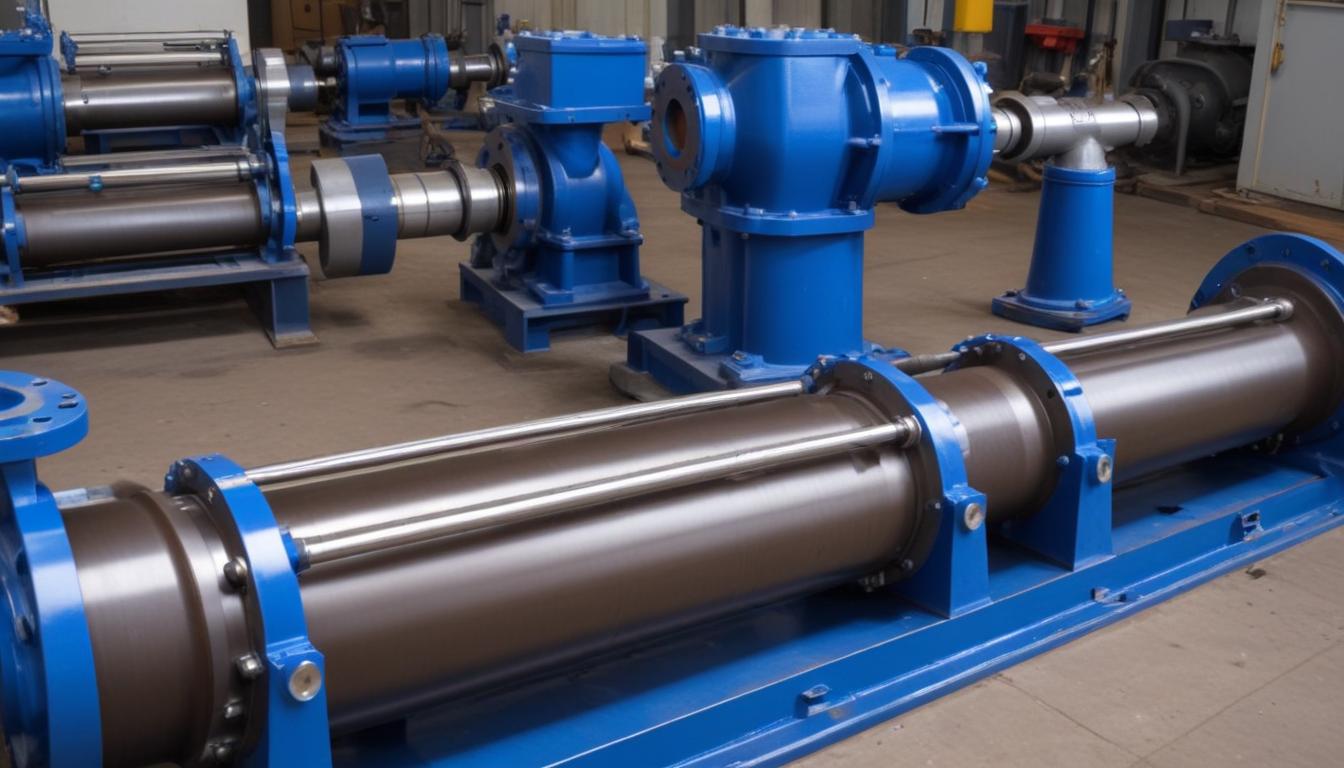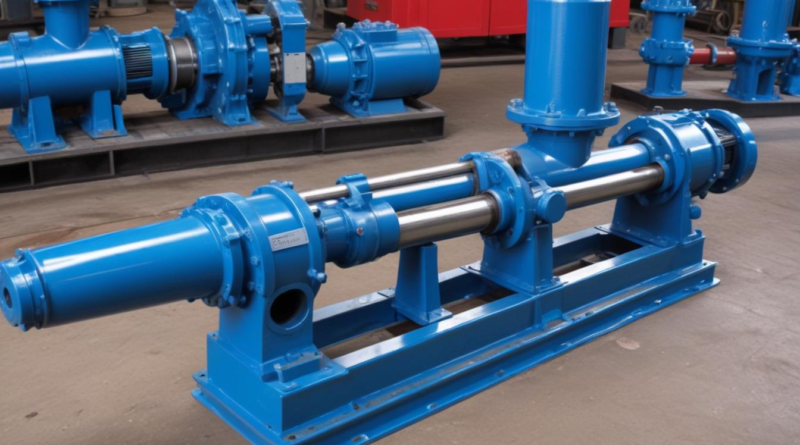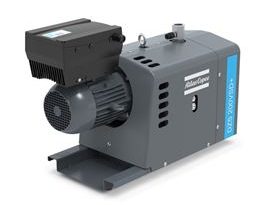Understanding the mechanics of progressive cavity pumps
Progressive cavity pumps are specialized devices designed for the effective transportation of fluids, particularly those with varying viscosities, including slurries and Newtonian fluids. The mechanics behind these pumps involve a helical rotor rotating within a stator, which is typically made from a flexible elastomer that creates a series of sealed cavities. As the rotor turns, it displaces the fluid through these cavities, ensuring a smooth and continuous flow. This design is crucial as it minimizes pulsation, providing a steady stream of liquid, which is beneficial in many industrial applications.
The pump operation is characterized by several key factors that enhance performance and efficiency. Progressive cavity pumps excel in handling fluids with high solid content, maintaining operational effectiveness in harsh environments. The unique geometry of the rotor and stator allows for self-priming capability, often capable of drawing fluids from deep sources without the need for additional suction assistance.
To maximize the efficiency of progressive cavity pumps, it’s essential to understand their mechanics, including how variations in speed affect flow rate, pressure, and discharge performance. The mechanics involve a careful balance between the rotor speed and the viscosity of the fluid being pumped. Engineers must also consider factors such as temperature and chemical composition of the fluid, as these can influence the overall pump longevity and reliability.
In addition, selecting the right progressive cavity pump size and configuration is critical, as these factors can significantly impact operational costs and energy consumption. Regular monitoring of the pump’s performance parameters ensures that any deviations from optimal functioning can be addressed promptly, ultimately leading to increased efficiency, reduced downtime, and lower maintenance costs.
An in-depth grasp of the mechanics involved in progressive cavity pumps serves engineers and pump users alike, ensuring effective application and management of these versatile fluid transfer solutions.
Principles of operation
The operation of progressive cavity pumps is rooted in the interaction between the helical rotor and the stator. When the rotor spins, its helical shape creates a moving chamber that progresses along the length of the stator. This motion generates a series of defined cavities that trap fluid and move it from the intake to the discharge side. The continuous rotation of the rotor facilitates a peristaltic flow, which is characterized by the uninterrupted movement of fluid, reducing the potential for cavitation and ensuring consistent flow rates under varying conditions.
The fundamental principles of operation are highly influenced by the viscosity of the fluid being pumped. As viscosity increases, the torque required to drive the rotor also increases, meaning pump operation must be carefully calibrated to ensure optimal performance. Engineers often employ speed control mechanisms to adjust the rotor’s rotation, thereby accommodating different fluid properties and ensuring energy efficiency. It’s crucial to operate within the recommended range of rotor speed to avoid excessive wear and potential failure of the pump components.
- Fluid dynamics: The mechanics of how the rotor and stator interact contribute to the efficiencies within the system. The geometry of the cavity ensures that as the rotor rotates, the pressure differential created consistently moves the fluid forward.
- Pressure and flow rate: Despite varying viscosities, progressive cavity pumps maintain their flow characteristics by adapting the pressure exerted by the rotor’s design. Higher flow rates can be achieved through increased rotor speed, while maintaining manageable pressure levels.
A notable characteristic of progressive cavity pumps is the ability to handle shear-sensitive fluids without altering their properties. This makes them suitable for a range of applications, from transferring food products to various chemical processes. Furthermore, the pump’s robust design allows for reliable operation in hostile environments, where other pump types may fail.
Understanding the mechanics of progressive cavity pumps is essential for optimizing pump operation. Insights into rotor speed, viscosity, and the design of the pump contribute significantly to the effective management of fluid transfer across various industries. The ability to monitor and adapt these parameters ensures long-term reliability and efficiency in pump performance.
Components of progressive cavity pumps

The components of progressive cavity pumps play a vital role in their functionality and efficiency, consisting primarily of the helical rotor and the stator, along with several ancillary parts that contribute to overall performance. These components are designed to work seamlessly together, ensuring smooth operation even under demanding conditions.
1. Helical Rotor: The rotor is the essential moving part of the pump, designed with a helical shape that allows for the creation of cavities that transport the fluid. The rotor’s geometry is optimized to enhance fluid movement and minimize shear, making it suitable for handling both viscous and shear-sensitive fluids. The material composition of the rotor often includes corrosion-resistant alloys or hardened materials, allowing it to withstand abrasive and corrosive environments.
2. Stator: The stator is a stationary component that surrounds the rotor, typically made from a flexible elastomer like nitrile or polyurethane. This elasticity is key, as it forms the sealed chambers essential for pumping action. The stator’s design allows it to accommodate the rotor’s movement while preventing backflow, ensuring continuous fluid transport. Choosing the right elastomer for the stator materials can significantly influence the pump’s resilience and compatibility with various fluids.
3. Drive Shaft: The drive shaft connects the rotor to the motor, transferring the rotational energy necessary for pump operation. Proper alignment and support of the drive shaft are critical for minimizing wear and reducing vibration, which can lead to operational issues. It usually features a key or spline fitting to facilitate easy assembly and disassembly.
4. Bearings: Bearings support the rotor and drive shaft, allowing for smooth rotation. They are typically made from durable materials to withstand wear. Depending on the design, either radial or axial bearings may be employed to address the specific mechanical requirements of the pump.
5. Inlet and Outlet Ports: The design of the inlet and outlet ports must accommodate the specific fluid characteristics being pumped. These ports must create a tight seal to prevent leaks while allowing for efficient fluid intake and discharge. Adaptation of the port sizes to match the system pipeline can directly influence flow rates and pressure levels.
6. Seal System: The sealing system is crucial for preventing leaks between the pump casing and the rotor. Many progressive cavity pumps utilize mechanical seals or O-rings that ensure a tight fit, especially when handling hazardous or environmentally sensitive fluids. The choice of materials for seals is essential to accommodate varying pressure and temperature conditions.
7. Discharge and Suction Housings: These housings are designed to ensure structural integrity and support operational efficiency. They must be constructed to withstand the pressures exerted during pump operation while allowing for easy maintenance access. Design considerations often include the ability to accommodate different mounting configurations and the space required for ancillary equipment.
Each of these components must be selected carefully, as their performance directly impacts the pump operation. Proper maintenance of components is crucial for ensuring longevity and efficiency in progressive cavity pumps. Engineers must monitor the health of these parts through regular inspections and implement best practices for maintenance to avoid unplanned downtime and costly repairs.
Understanding the various components of progressive cavity pumps and their interplay is fundamental for engineers and pump users alike. This knowledge allows for optimal selection, troubleshooting, and maintenance of pumps, ensuring that they perform reliably in demanding applications.
Applications and industry use
Progressive cavity pumps are utilized across a diverse range of industries due to their unique advantages in handling various types of fluids. Their design and operation principles make them particularly suitable for applications involving viscous liquids, slurries, and shear-sensitive materials. The following sections detail specific applications and industries where these pumps excel:
- Food and Beverage Industry: Progressive cavity pumps are widely used for transferring thick liquids, such as purees, sauces, and dairy products. Their gentle pumping action ensures that the product’s integrity is maintained without causing damage or alteration.
- Oil and Gas: In this sector, progressive cavity pumps handle crude oil, emulsions, and other hydrocarbons. Their ability to operate in high-viscosity environments enhances reliability during extraction and transportation processes.
- Wastewater Treatment: Progressive cavity pumps are employed to move sludge, biosolids, and other viscous waste products. Their robust design allows for the handling of abrasive materials typically found in sewage and industrial wastewater.
- Chemical Processing: They are commonly used to transfer and dose chemicals, including corrosive materials and solvents. The capability to handle different fluid characteristics with minimal shear damage makes progressive cavity pumps ideal for this application.
- Pulp and Paper: In this industry, these pumps are utilized for slurry transport, ensuring consistent feed rates during the manufacturing process. Their high reliability and efficiency support production goals while maintaining product quality.
- Mining and Minerals: Progressive cavity pumps effectively manage slurries containing solid materials, enabling the transportation of minerals and tailings. Their ability to handle varying solid contents while maintaining flow rates is crucial in mining operations.
Furthermore, progressive cavity pumps are instrumental in various other sectors, including:
- Agriculture: For irrigation and liquid fertilizer applications, progressive cavity pumps ensure uniform distribution and efficiency, crucial in maximizing agricultural productivity.
- Pharmaceuticals: In the pharmaceutical industry, these pumps are used for the precise dosing of active ingredients in liquid formulations, contributing to high-quality standards in production.
- Biodiesel Production: They play a critical role in the production process, moving raw materials and final products through various stages of manufacturing.
As the requirements for fluid transfer grow in complexity, the versatility of progressive cavity pumps addresses the need for reliable and efficient pumping solutions in these varied applications. Their capability to maintain operational integrity under challenging conditions results in consistent performance across industries, emphasizing their integral role in modern fluid management systems.
Advantages and disadvantages

When evaluating the advantages and disadvantages of progressive cavity pumps, it is essential to consider their operational characteristics and suitability for various applications. Understanding these factors aids engineers and pump users in making informed decisions regarding pump selection and use, ensuring optimal performance and reliability.
Advantages:
- Versatility: Progressive cavity pumps excel in managing a wide range of fluid viscosities, from low to high, which makes them applicable in industries such as food and beverage, wastewater treatment, and chemical processing.
- Continuous Flow: The design ensures a smooth, pulsation-free flow, which is critical for maintaining consistent process conditions, particularly in systems requiring precise fluid transfer.
- Self-Priming Ability: These pumps can draw fluid from low levels, eliminating the need for additional suction equipment, which simplifies installation and operational processes.
- Gentle Handling: Progressive cavity pumps are ideal for shear-sensitive materials, as they minimize fluid disturbance during transfer, preserving critical properties in sensitive applications.
- Durability: Made from robust materials, these pumps withstand harsh conditions, including abrasive and corrosive environments, making them suitable for industrial applications with demanding operational requirements.
Disadvantages:
- Cost: The initial investment for progressive cavity pumps can be higher than for other pump types. This can be a factor in applications where budget constraints are a priority.
- Maintenance Needs: While generally reliable, these pumps require routine maintenance to ensure peak performance. Regular inspections of components, such as seals and bearings, are crucial to prevent unexpected failures and downtime.
- Viscosity Limitations: Though capable of handling a variety of viscosities, extremely high-viscosity fluids may still present challenges. The torque requirements can exceed the pump’s specifications, necessitating careful selection based on operational conditions.
- Pump Operation Sensitivity: Variations in the operating environment, such as temperature and chemical composition, can affect pump efficiency and may require adjustments to the mechanical settings to maintain optimal performance.
By understanding the specific advantages and disadvantages of progressive cavity pumps, engineers can select the appropriate pump for their applications, ensuring that its operation aligns with project requirements and operational goals. This awareness leads to better management of pump systems, driving efficiency and reliability throughout their service life.
Maintenance and troubleshooting techniques
Maintaining the efficiency and reliability of progressive cavity pumps is essential for preventing unexpected failures and ensuring smooth operation across various applications. Regular maintenance and troubleshooting techniques are vital for optimizing performance and prolonging the lifespan of these systems. A structured maintenance plan can mitigate risks associated with wear and potential damage, especially in demanding operational conditions.
1. Routine Inspections: Regular visual inspections of progressive cavity pumps are crucial for identifying signs of wear, leaks, or abnormal operation. Key areas to monitor include:
- Seals: Inspect seals for signs of wear or degradation, as compromised seals can lead to fluid leaks and decreased efficiency.
- Bearing Condition: Ensure bearings are adequately lubricated and free from debris to minimize friction and wear. Listen for unusual noises during operation, which may indicate bearing failure.
- Rotor and Stator Wear: Check the rotor and stator for signs of abrasion or pitting, as these can affect pump performance and lead to inefficiencies.
2. Lubrication Maintenance: Proper lubrication of bearings and other moving components is crucial for reducing friction and wear. Follow the manufacturer’s guidelines for lubrication type and intervals:
- Use the recommended lubricants suitable for the operational environment of the pump.
- Check lubrication systems regularly to ensure they are functioning properly and delivering the appropriate amounts.
3. Monitoring Performance Parameters: Keeping a close eye on performance metrics is essential for troubleshooting potential issues before they escalate. Key parameters to review include:
- Flow Rate: Regularly check the flow rate against expected values to identify any declines in pump performance.
- Pressure Levels: Monitor inlet and outlet pressure levels to detect potential blockages or inefficiencies in fluid movement.
- Temperature: Watch for abnormal temperature changes that may indicate mechanical issues or inadequate lubrication.
4. Troubleshooting Techniques: If performance issues arise, a systematic troubleshooting approach is critical:
- Identify Symptoms: Gather data on operational changes, such as decreased flow rates, unusual noises, or increased vibration levels.
- Check Connections: Ensure that all connections, including inlet and outlet ports, are secure and free from obstructions.
- Inspect for Leaks: Detect any signs of fluid leakage around seals or joints, and repair or replace affected components as necessary.
- Adjust Speed Settings: Evaluate if further adjustments to rotor speed are required to accommodate changes in fluid viscosity or system demands.
5. Component Replacement: Understanding when to replace worn components is vital for maintaining the integrity of progressive cavity pumps:
- Replace seals and bearings as part of regular maintenance intervals or at the first sign of wear.
- Consider rotor and stator replacement if significant wear is observed, as these components are critical to maintaining pump operation.
Implementing these maintenance and troubleshooting techniques ensures that progressive cavity pumps operate efficiently and effectively, minimizing the risk of downtime and enhancing overall performance. Engaging in proactive maintenance practices not only safeguards the mechanical health of the pump but also optimizes fluid transfer processes across various industrial applications.




